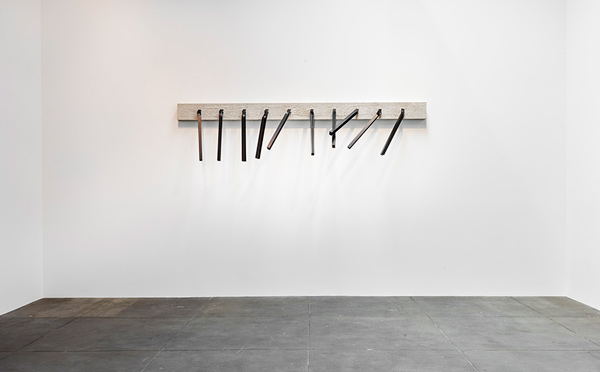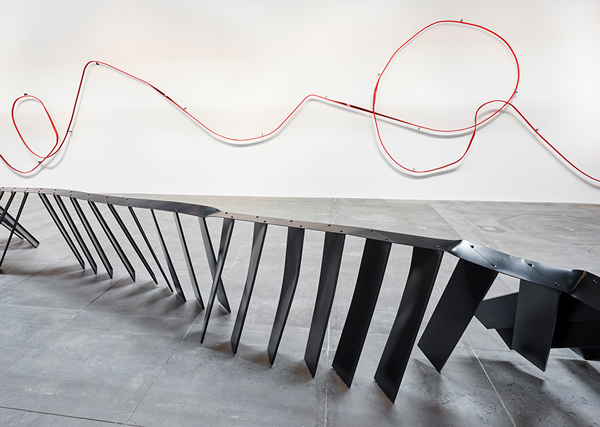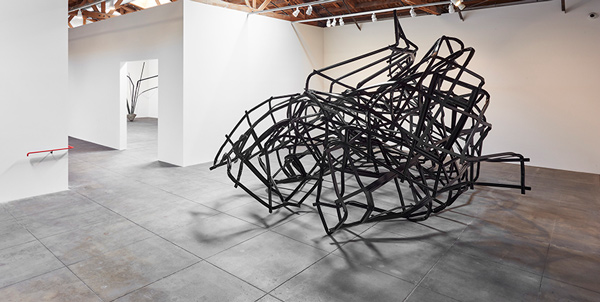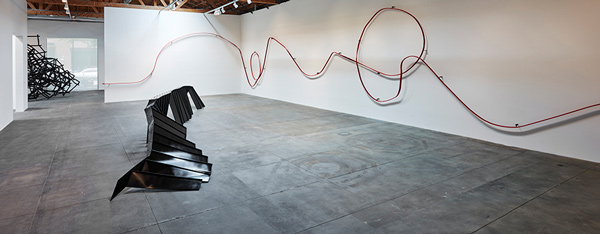Alluding to the postmodern architecture of her Polish homeland, Monika Sosnowska’s first solo show at Hauser & Wirth Los Angeles is comprised of six structural installations, which despite their rigid physicality and mass, are warped with drama, yet seem constructed without beginning or end. Working in steel and concrete, Sosnowska both highlights and challenges the concept of architectural space, creating an environment that disorients by way of vaguely recognizable architectural motifs.

‘Monika Sosnowska’ installation view. © Monika Sosnowska. Courtesy of the artist and Hauser & Wirth. Photo: Mario de Lopez.
Sosnowska seems to have adopted Minimalism’s penchant for industrial materials, yet her work separates itself through ambiguity, as opposed to the meticulous arrangement of forms typical of Minimalism. Evident in Handrail (2016) and Stairs (2016), which are self-referential by title, Sosnowska’s handling of the materials—black steel and red PVC pipe—result in warped, theatric forms. Handrail (2016) loops at varying heights, ridding itself of functionality; similarly, in Stairs (2016), practicality is replaced by a slightly spiraled, horizontally-positioned steel structure. Stripped to their foundational skeletons, these architectural elements stimulate perceptions with fragments just recognizable enough to establish a connection.

‘Monika Sosnowska’ installation view. © Monika Sosnowska. Courtesy of the artist and Hauser & Wirth. Photo: Mario de Lopez.
Dwarfing the viewer with its scale, Façade (2016) makes reference to the urban landscape of Warsaw. A tangled network of steel, Façade (2016) appears fragile, despite the solidity of the material itself. This dichotomy between that which is enduring and at the same time malleable, lies at the crux of the artist’s work. Sosnowska’s structural assemblages challenge the impression of utilitarian materials equaling permanence, support, and stability. In a clear sense, the artist’s newest body of work reflects the fragile human experience—resilient and adaptable, though in the end, not entirely invincible.

‘Monika Sosnowska’ installation view. © Monika Sosnowska. Courtesy of the artist and Hauser & Wirth. Photo: Mario de Lopez.
Monika Sosnowska, July 1 – September 17, 2017 at Hauser & Wirth Los Angeles, 901 East 3rd Street, Los Angeles, CA 90013, www.hauserwirth.com.


